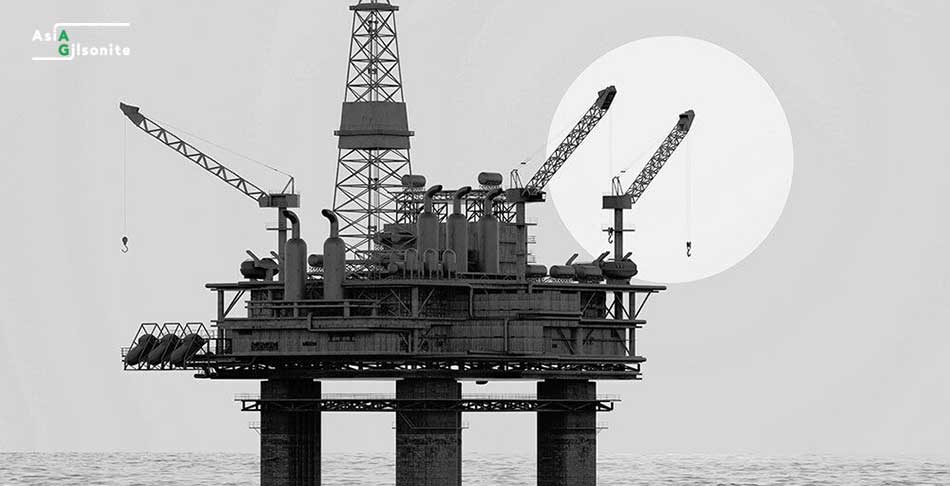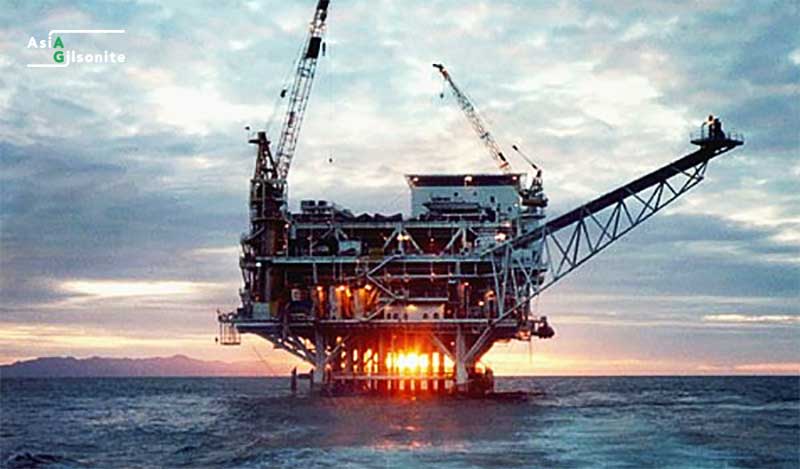We hope to provide knowledge on how oil drilling works in this article. Following a detailed explanation of oil drilling work, we go over issues such oil well drilling process, oil drilling effects, offshore drilling procedure step by step, oil drilling facts, and so on.
Oil drilling work
Drilling a hole deep into the soil is the first step in the procedure. A lengthy bit attached to a “drilling string” is used to do this. The diameter of the bit ranges from five to fifty inches. After each portion is drilled, a steel pipe slightly smaller than the diameter of the hole is inserted, and the gap is often filled with cement.
This oil well drilling process is utilized to give the hole some structural integrity and to isolate high-pressure rock sections that could explode if released.
Oil drilling work is as follows: Not surprisingly, the drilling technique differs from using a power drill on a piece of wood. The most noticeable distinction is that the hole is filled with “mud,” which is a mixture of fluids, solids, and chemicals.
How to Drill an Oil Well?
Constructing an oil bore is a major undertaking that necessitates many teams of personnel as well as large sums of money. However, money and labor are insufficient. Permits and proposals must be completed before work can begin, as well as extensive research and the acquisition of specialist equipment. Only then may a corporation start looking for its own “black metal” source.
Therefore, the following should be given priority for oil well drilling process:
- Identify the drill site
- Create an excavation proposal
- Make an archaeological proposal
- Hire staff to support your efforts
- & …
what do you know about the benefits of the oil drilling? if you like to know more read our blog we have talked about the benefits of oil drilling in the industry.
Oil drilling effects:
Due to oil drilling facts, we’ve some major environmental impacts of oil drilling:
- Water pollution
Water pollution is one of Oil drilling effects. The drilling fluid may be poisonous. It influences marine existence through disrupting the meals chain. Oil spills all through drilling purpose water pollution. High quantity of poisonous chemical can get into the water.
- Changes landscape
Drilling operations would like serious instrumentation like bulldozers. These might have an effect on the vegetation and leave permanent injury on the road. It will increase erosion as well.
- Changes flora and fauna migration routes
In the drilling, there may be masses of traffic. The noise this is created in the course of the drilling operation impacts wildlife. Their migration routes can be affected.
Offshore drilling process step by step:
The process of drilling an oil well in the deep sea begins with finding an offshore resource and drilling with mobile drilling machines. Once the temporary drilling units have completed their work, permanent offshore gas/oil production structures or platforms are placed to complete the remaining procedures.
Well Drilling is the method of extracting natural resources by drilling a hole in the ocean floor. It’s a difficult element of the research and development process, which takes place in stages.
Furthermore, drilling a well in adverse conditions like cold sea water temps and strong sea bed currents, as well as pressures high enough to break even high tensile metals, is extremely tough.
But oil drilling in the ocean is more different:
First we examine and answer the question how does oil drilling work in ocean?
On land or in shallow water, not all oil is accessible. Some oil resources can be found buried deep beneath the ocean’s surface. It’s risky to get to these oil resources.
The blowout preventer is located on the seabed. In the event of a blowout, the blowout preventer has a pair of hydraulically operated clamps that can block off the pipe heading up to the rig. Each pipe section is approximately 30 feet long. The blowout preventer is located on the seabed. In the event of a blowout, the blowout preventer has a pair of hydraulically operated clamps that can block off the pipe heading up to the rig. Engineers must add extra pipe to the drill string as the rig digs deeper. Each section of pipe is 30 long in feet.
Oil drilling machine
In fact, there are many oil drilling machines today that facilitate oil drilling work. The oil extraction process depends on the quality of the tool as well as how it is done.
How Oil Rig works?
Oil rig drilling work in these fellow steps:
Drilling wells down to a depth of 3,000 meters for oil and 5,000 meters for gas requires the use of a derrick. The derrick is composed of a collagen-safe hybrid material that can withstand extreme temperatures and weight.
These are used to transport oil and gas to central processing facilities. Electrical submersible syphons are used to transport oil to the surface on occasion.
When the number of wells that may be penetrated is determined, Adonic must link them to pipelines.
The oil and gas enter the midstream-conveyance stage when they are ready to be transferred. Preparation, stockpiling, and cheap exhibiting of oil commodities are all part of this process. They are subsequently shipped downstream to be dispersed to other locations, such as gas stations.
Horizontal oil drilling work
But the more important question that comes to mind is: How does horizontal oil drilling work?
A single hole length is currently limited to roughly 8,000 linear feet, and pipe diameters are limited to 48 inches or fewer. In general, this process is divided into three parts, which are detailed below.
Horizontal drilling is the process of drilling a well from the surface to a subsurface location called the “kickoff point” just above the target oil or gas reservoir, then deviating the well bore from the vertical plane around a curve to intersect the reservoir with a near-horizontal inclination at the “entry point.” The drill pipe cannot rotate as it does in typical drilling in order to change the direction of drilling. Instead, just the drill bit at the drill pipe’s front end rotates.






